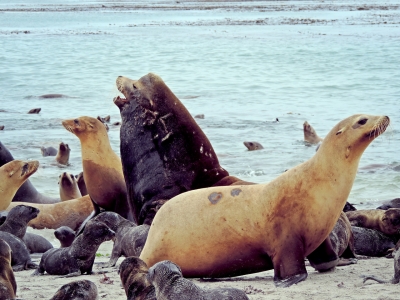How does climate change affect California sea lions?

As a direct impact of climate change, the population of California sea lions has been on a dramatic decline over the last few years. However, one colony has given hope to conservationsists and wildlife lovers. How?
California sea lions are native to North America, and are found between Alaska and the Gulf of California. Though the International Union for Conservation of Nature lists them under "Least Concern" due to their abundance, as mentioned earlier, their numbers have been dwindling.
To add to this, between 2013 and 2016, thousands of emaciated juveniles (several dead) washed up on the coast of California, stumping conservationists. This was later linked to unusually warm Pacific waters. The warming meant that large populations of nutritious fish such as sardines and anchovy moved north to cooler waters during the period, leaving sea lion mothers to feed on less nutritious rockfish and squid. A study suggested that the poor health of juvenile sea lions was a result of their mothers eating the oceanic equivalent of "junk food". A news report said that the population of this species in the Gulf of California "has dropped by 65 percent from 1991 to 2019. It went from 45,000 to 15,000 animals because of an increase in the temperature of the water.
And now comes the happy news from one colony in a natural refuge area off the coast of northwest Mexico. Research has shown that the number of California sea lions in the colony in Las Islotes, located in the Gulf of California, "has grown from 500 to 700 in 10 years. This is one of 13 colonies of this species identified in the gulf, and the "only colony that not only has remained stable but has increased slightly".
At Los Islotes, human activities such as fishing and tourism have been restricted so the animals can rest and reproduce. In fact, tour operators stop visits during the mating season so the animals are not disturbed. Apparently, when visits are permitted, tourists get a chance to swim with these creatures. The 'swimmers' could be juveniles because they are playful and like to get close to humans" whereas adults are territorial and "keep their distance from people".
Picture Credit : Google